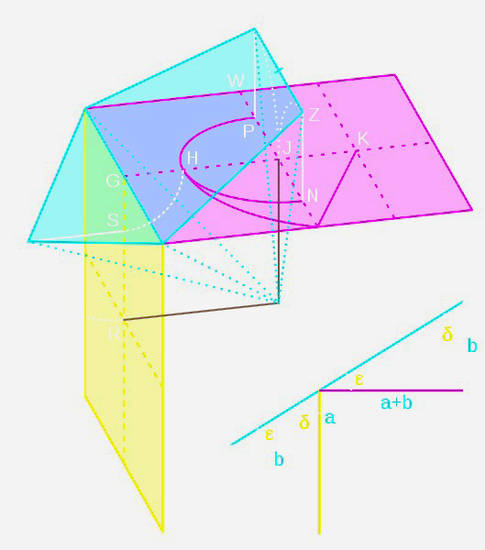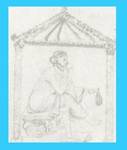|
|
Creato da Joey08 il 08/08/2009
Fra lui e me divisa in due la stessa anima
|
Area personale
Tag
Cerca in questo Blog
Menu
Chi può scrivere sul blog
Una risposta a "Schumann insano? Sei pazzo?

Magliozzi, JR, MD, ABPN, dice:
May 12th, 2009 a 7:15
19,15, Martedì 12 Maggio 2009
La prova che il compositore Robert Schumann (1810-1856) si è riunito gli attuali criteri diagnostici per Bipolare I II o disordine.
Magliozzi, JR, MD, ABPN, Rio Rancho, NM, USA
Le questioni relative alla malattia che affliggevano la vita Robert Schumann e che in ultima analisi, lo prese trovo sconcertante come la sua natura è abbastanza chiaro. (Wikipedia, per esempio, afferma che Schumann è morto di sifilide o le complicazioni del suo trattamento standard della giornata, mercurio salts1). L'articolo "Schumann insano? Sei pazzo?" di Mark Pennell alludendo alla nozione che Schumann era un disturbo mentale, che è stato nascosto da sua moglie e Joseph Joachim, ma su insistenza di Johannes Brahms, è stato portato allo scoperto rappresenta la vera storia. (Brahms e Clara avuto diversi argomenti rumorosa sul disordine mentale di Schumann, così come la pratica di Clara di censurare molte delle sue opere, non solo il Concerto per violino, ma in particolare il numero '4’ Sinfonia in re minore, il cui numero di opus 120 non riflette il fatto che per la prima volta nella composizione, ma non pubblicato fino alla sua moglie, Clara, revisioni notevoli sono stati inseriti, circa dieci anni più tardi.) il lavoro di molti, molto adeguatamente analizzato e sintetizzato dal Dr. Kay Redfield Jamison nel suo capitolo su "La creatività, leadership, classe sociale e di disordine bipolare"2 in primi lavori accademici sul disturbo bipolare, a cura di Federico K. Goodwin, MD e il dottor Jamison, presentare argomenti convincenti per diatesi permanente Maestro Schumann di disturbo bipolare, con istituisce il suo tuffo nel Reno come un tentativo di suicidio, da cui è stato salvato, di citazioni dalle note giornaliere dal manicomio a Düsseldorf, in cui è stato collocato in seguito, uno dei più avanzati in Europa, al momento, e alla quale moderna psichiatri, psicologi e operatori della salute mentale devono molto, come un pioniere nel pensiero moderno e criteri diagnostici. Il dottor Jamison presenta anche una tabella di corrispondenza tra i numeri di opus delle sue opere con l'anno d'autore, dimostrando una periodicità impressionante di uscita correlare bene con il proprio, di sua moglie e le osservazioni dei suoi colleghi 'di comportamenti maniacali e depressivi e ideazione, compreso il modo cosiddetti 'Anno Sinfonica' del 1840, in cui è stato molto produttivo, e durante la quale le proprie lettere rivelato francamente ideazione ipomaniacali. Maestro Schumann è stata spesso in modo intuitivo per quanto riguarda la sua afflizione, l'attestazione di cui rimando il lettore alle sue osservazioni circa la sua Sinfonia n. 2 in C, op. 61, come citato nel capitolo dottor Jamison così come le note di copertina di una registrazione Deutche Gramophone delle sue sinfonie, i due precedenti non registrate 'symphoniettas', diverse opere di singoli e la solidarietà corno francese, ed entrambe le versioni del Symphony No. 4 in d, una versione finora mai rappresentata di origine molto presto e l'op. 120. Come una osservazione personale, posso aggiungere che la signora Schumann (nata Clara Wieke) sacrificato la sua promettente e barriera di genere rottura carriera come pianista virtuoso e compositore di assistere, per fissare limiti e di agire come un terapeuta devoto per il marito, un storia del sacrificio di sé, che implora per chiarire a se stante.
1. Wikipedia, Robert Schumann, "Dopo il 1850". http://en.wikipedia.org/wiki/Robert_Schumann, 2009.
2. Goodwin, FK, Jamison, KR: Manaic-Depressivo Disordini: Bipolari Disordine e Depressione Ricorrente, 2nd Edition, Oxford University Press, 2007.
Sa alguno Che il Schumann uno psichiatra per Dusseldorf fosse Stato Dr. Emil Krapelin?
|
|
One Response to “Schumann insane? Are you nuts?”

Magliozzi, JR, M.D., A.B.P.N., Says:
May 12th, 2009 at 7:15 pm 17.02, Tuesday, 12 May, 2009
Evidence that the composer Robert Schumann (1810-1856) met current diagnostic criteria for Bipolar I or II disorder.
Magliozzi, JR, M.D., A.B.P.N., Rio Rancho, NM, U.S.A.
The questions regarding the ailment which plagued Robert Schumann’s life and which ultimately took it I find puzzling as its nature is fairly clear.
(Wikipedia, for example, asserts that Schumann died of syphilis or the complications of its standard treatment of the day, mercury salts1). The article “Schumann insane? Are you nuts?” by Mark Pennell alluding to the notion that Schumann had a mental disorder, which was concealed by his wife and Joseph Joachim, but on the insistence of Johannes Brahms, was brought out into the open represents the true story. (Brahms and Clara had several vociferous arguments over Schumann’s mental disorder, as well as Clara’s practice of censoring many of his works, not only the violin concerto, but in particular the ‘4’th’ symphony in d minor, whose opus number of 120 does not reflect the fact that it was first in composition, but not published until his wife’s, Clara, considerable revisions were incorporated, about ten years later.)
The work of many, quite adequately analyzed and summarized by Dr. Kay Redfield Jamison in her chapter on “Creativity, Leadership, Social Class and Bipolar Disorder”2 in the seminal academic work on bipolar disorder, edited by Fredrick K. Goodwin, M.D. and Dr. Jamison, make a convincing case for Maestro Schumann’s lifelong diathesis to bipolar disorder, by establishing his plunge into the Rhine as a suicide attempt, from which he was rescued, to quotations from the daily notes from the asylum in Düsseldorf in which he was placed thereafter, one of the most progressive in Europe at the time, and to which modern psychiatrists, psychologists and mental health workers owe much as a pioneer in modern diagnostic thinking and criteria. Dr. Jamison even presents a table correlating the opus numbers of his works with the year of authorship, demonstrating a striking periodicity of output correlating well with his own, his wife’s and his colleagues’ observations of manic and depressive behavior and ideation, including the so-called ‘Symphonic Year’ of 1840, in which was very productive, and during which his own letters revealed frankly hypomanic ideation. Maestro Schumann was often quite insightful regarding his affliction, attesting to which I refer the reader to his comments about his Symphony No. 2 in C, Op. 61, as cited in Dr. Jamison’s chapter as well as the liner notes of a Deutche Gramophone recording of his symphonies, two previously unrecorded ’symphoniettas’, several works for solo and soli French horn, and both versions of the Symphony No. 4 in d, a hitherto unperformed version of very early origin and the Op. 120. As a personal observation, may I add that Ms. Schumann (née Clara Wieke) sacrificed her own promising and gender barrier-breaking career as a virtuoso pianist and composer to assist, set limits for and act as a devoted therapist for her husband, a story of self-sacrifice that begs for elucidation in its own right.
1. Wikipedia, Robert Schumann, “After 1850”. http://en.wikipedia.org/wiki/Robert_Schumann, 2009.
2. Goodwin, F. K. and Jamison, K. R.: Manic-Depressive Illness: Bipolar Disorders and Recurrent Depression, 2nd Edition, Oxford University Press, 2007.
|
|
Schumann insane? Sei pazzo?
Post n°2 Pubblicato il 15 Ottobre 2009 da Joey08
Scritto da: Mark Pennell, WKSU Radio Campus, Kent State, OH, USA, il 3 luglio 2008
Robert Schumann Concerto per violino in re minore non ha un numero d'opera. Si è invece "WoO 23." Che significa semplicemente "Senza Opus". Il motivo per cui non vengono assegnati uno stato che, francamente, le persone che lo conoscevano meglio e ho visto il suo comportamento nel momento in cui è stato lo compongono sono state paura il pubblico possa in qualche modo scoprire un lato che non volevano. Hanno pensato che il suo deterioramento della salute mentale è stato evidente nel suono del pezzo. Così è stato tenuto nascosto per più di 80 anni. Schumann è iniziata il 11 settembre 1853, è stato finito con essa in 22 giorni. Il tutto è su carta in appena tre settimane. Ma vorrei aggiungere un asterisco non a causa di ciò che è accaduto prima che fosse completamente finito. Un giovane di nome Johannes Brahms si presentò il 1 ° ottobre. Schumann aveva appena iniziato il movimento 3. C'era qualcosa in quel primo incontro (che è stato menzionato più volte come uno dei più importanti nella storia della musica classica). Dopo quella prima notte, anche se Robert Schumann compose questo concerto per violino per il suo vecchio amico, Joseph Joachim, c'era qualcosa del suo nuovo amico che lo ha spinto a comporre praticamente l'intero movimento terzo in soli tre giorni! Il concerto in cui è stato a premiere era nello stesso mese. Joachim ha giocato l'Schumann Fantasie in do maggiore, op. 131, ma lui non ha giocato il concerto, e non avrebbe mai. Ma ha tenuto sul manoscritto il resto della sua vita. Schumann tentato di uccidersi dopo altri 5 mesi e finì in un sanatorio. Che cosa è successo solo aggiunto a sospetti di Gioacchino da Fiore che un uomo molto diverso aveva composto il pezzo di quello che sapeva. Così, ha iniziato una campagna tranquilla per assicurarsi che il concerto sarebbe rmain mai rappresentata. È andato alla vedova Clara Schumann, e anche al suo nuovo amico di Brahms per metterli d'accordo che il pezzo dovrebbe restare fuori delle mani del pubblico, si spera per sempre. Interessante, anche se, se Joachim sentito così forte in quel modo, perché non l'ha distrutta? Nel suo testamento, ha stabilito che non sarebbe stata distrutta e dovrebbe finire nel prussiano Biblioteca Statale di Berlino. E non poteva essere eseguito per anther cento anni dopo la morte del compositore - che avrebbe reso 1956. Ma, nel marzo del 1933, durante una seduta spiritica a Londra con due grandnieces Joachim, almeno uno ha affermato di aver sentito la voce dello spirito di Robert Schumann, ingiungendo loro di tirare fuori il manoscritto e di eseguirla. Ha preso un po 'a trovarlo, e poi quattro anni più tardi, è proprio così accadde che Yehudi Menuhin è stata data la musica che lui è stato chiesto per il suo parere di esso. Menuhin cadere tutto quello che stava facendo e ha cominciato a prepararsi per la premiere.However, uno dei nipoti del grande Gioacchino, che aveva una reputazione come violinista decente, ha affermato che il 'spiritualista' aveva detto che dovrebbe essere quello di prima esso. E poi il governo tedesco (i nazisti), si è interessato e ha detto che doveva essere premiato da un tedesco. Così, il 26 novembre 1937, con l'Orchestra Filarmonica di Berlino e una relativamente sconosciuto (tedesco) violinista, è stato premiato. Ma circa una settimana dopo, è stato Menuhin che ha dato i risultati secondo (con accompagnamento di pianoforte), alla Carnegie Hall. La nipote ha dato il performance.I terzo 'm conduce da qualche parte con tutto questo. Okay, Robert Schuman non era sicuramente bene mentalmente dal periodo compose il suo Concerto per violino. Era sempre stato ossessionato dal fatto che sua madre aveva perso la sua salute mentale e si suicidò. E ora che aveva avuto a combattere l'insorgenza della sifilide, sapeva che spesso la devastazione più grande da essa era una pazzia. Così, come tante persone hanno in quei giorni, perché ha preso il mercurio. Provoca follia. Dobbiamo ricordare che in quei giorni, la gente voleva nascondere chiunque con la malattia mentale ... quasi al punto di far sembrare che la malattia mentale non esisteva. Così è stato Joseph Joachim corretta a convincere Clara Schumann che la malattia del marito, ha mostrato troppo chiaramente in questo pezzo? Non vi è dubbio che l'inizio si apre con una intensità di raro ascolto, e se eravamo consapevoli di quello che stava succedendo nella sua mente, allora si potrebbe capire un po 'più di quello che stava cercando di dire. Ma perché dovremmo licenziare un capolavoro potenziale solo perché siamo troppo paura di 'andare dentro' il pezzo, per farla prendere ua via? Non diventeremo pazzi per ascoltarla. In realtà, a causa della intensità in cui Schumann compose, potremmo avere la possibilità di un'esperienza più l'arte di essa (la musica come arte pura). Schumann, più o meno tutti nel suo mestiere, guardò la musica come arte. Molto tempo prima che egli è stato un compositore, è stato osservatore serio della musica (tra cui un ben rispettato critico ed editore di una rivista altamente touted musica). Non dovremmo guardare uno dopo Van Gogh, perché potremmo vedere la follia? Joachim aveva ragione?O dovrebbe l'uomo, Schumann, è conosciuta per tutto quello che è stato?
|
|
Schumann insane? Are you nuts?
Written By: Mark Pennell on July 3rd, 2008
Robert Schumann’s Violin Concerto in d minor does not have an Opus number. It has instead "WoO 23." That simply means "Without Opus." The reason it didn’t get assigned one was that, frankly, the people who knew him best and saw his behavior at the time he was composing it were afraid the public might somehow discover a side that they did not want. They thought that his deteriorating mental health was evident in the sound of the piece. So it was kept hidden for more than 80 years.
Schumann started on it on September 11, 1853 and was finished with it in 22 days. The whole thing was on paper in just three weeks. But I should add an asterisk there because of what happened before he was totally finished. A young man named Johannes Brahms showed up on October 1st. Schumann had barely started the 3rd movement. There was something about that first meeting (that has been mentioned many times as one of the most important in Classical Music history). After that first night, although Robert Schumann composed this violin concerto for his old friend, Joseph Joachim, there was something about his new friend that motivated him to compose virtually the entire third movement in just three days!
The concert in which it was to premiere was later that month. Joachim did play the Schumann Fantasie in C major, Op. 131, but he did not play the concerto, and never would. But he held onto the manuscript the rest of his life. Schumann tried to kill himself 5 months later and ended up in a sanitarium. What happened only added to Joachim’s suspicions that a very different man had composed the piece than the one he knew. So, he began a quiet campaign to make sure the concerto would rmain unperformed. He went to Schumann’s widow Clara, and even to his new friend Brahms to get them to agree that the piece should stay out of the public’s hands, hopefully forever. Interesting though, if Joachim felt so strongly that way, why didn’t he destroy it? In his will, he stipulated that it would not be destroyed and should end up in the Prussian State Library in Berlin. It would not be performed for anther hundred years after the composer’s death — which would have made it 1956.
But, in March 1933, during a spiritualist séance in London with two of Joachim’s grandnieces, at least one claimed to have heard the spirit-voice of Robert Schumann requesting that they pull out the manuscript and perform it. It took a while to find it, and then four years later, it just so happened that Yehudi Menuhin was given the music as he was asked for his opinion of it. Menuhin dropped everything he was doing and began to get ready for the premiere.
However, one of the grand nieces of Joachim, who had a reputation as a decent violinist, claimed that the ‘spiritualist’ had told her she should be the one to premiere it. And then the German government (the Nazis) got involved and said that it had to be premiered by a German. So, on November 26, 1937, with the Berlin Philharmonic Orchestra and a relatively unknown (German) violinist, it was premiered. But about a week later, it was Menuhin who gave the second performance (with piano accompaniment), at Carnegie Hall. The niece gave it the third performance.
I’m leading somewhere with all of this. Okay, Robert Schuman was definitely not doing well mentally by the time he composed his violin concerto. He had always been haunted by the fact that his mother had lost her sanity and committed suicide. And now that he had had to fight the onset of syphilis, he knew that often the greatest devastation from it was insanity. So, as so many people did in those days, for it he took mercury. It causes insanity.
We must remember that in those days, people wanted to hide anyone with mental illness…almost to the point of making it look as though mental illness did not exist. So was Joseph Joachim correct in convincing Clara Schumann that her husband’s illness showed up too clearly in this piece?
There is no doubt that the beginning opens with an intensity rarely heard, and if we were aware of what was going on in his mind, then we could understand a bit more what he was trying to say. But why should we dismiss a potential masterpiece just because we’re too afraid of ‘going inside’ the piece, to let it take ua away? We won’t become insane by listening to it. Actually, because of the intensity in which Schumann composed it, we might be allowed to experience more of the art of it (the music as pure art). Schumann, more than just about anyone in his trade, looked at music as art. Long before he was a composer, he was serious observer of music (including being a well-respected critic and publisher of a highly touted music magazine). Should we not look at a later Van Gogh because we might see insanity?
Was Joachim right? Or should the man, Schumann, be known for everything he was?
|
|
| « Precedenti | Successivi » |



